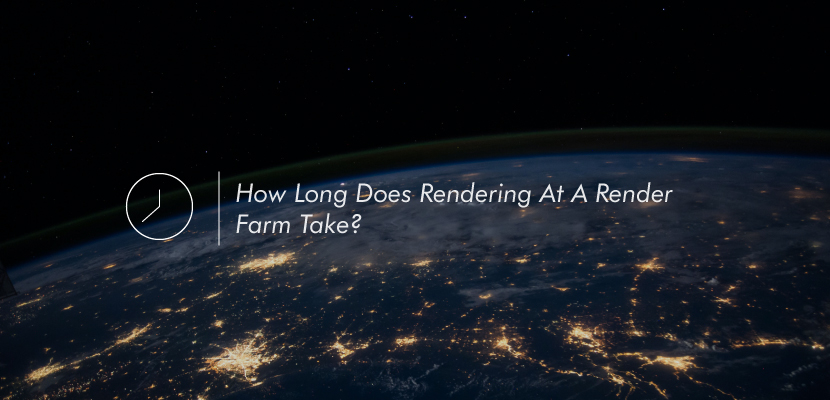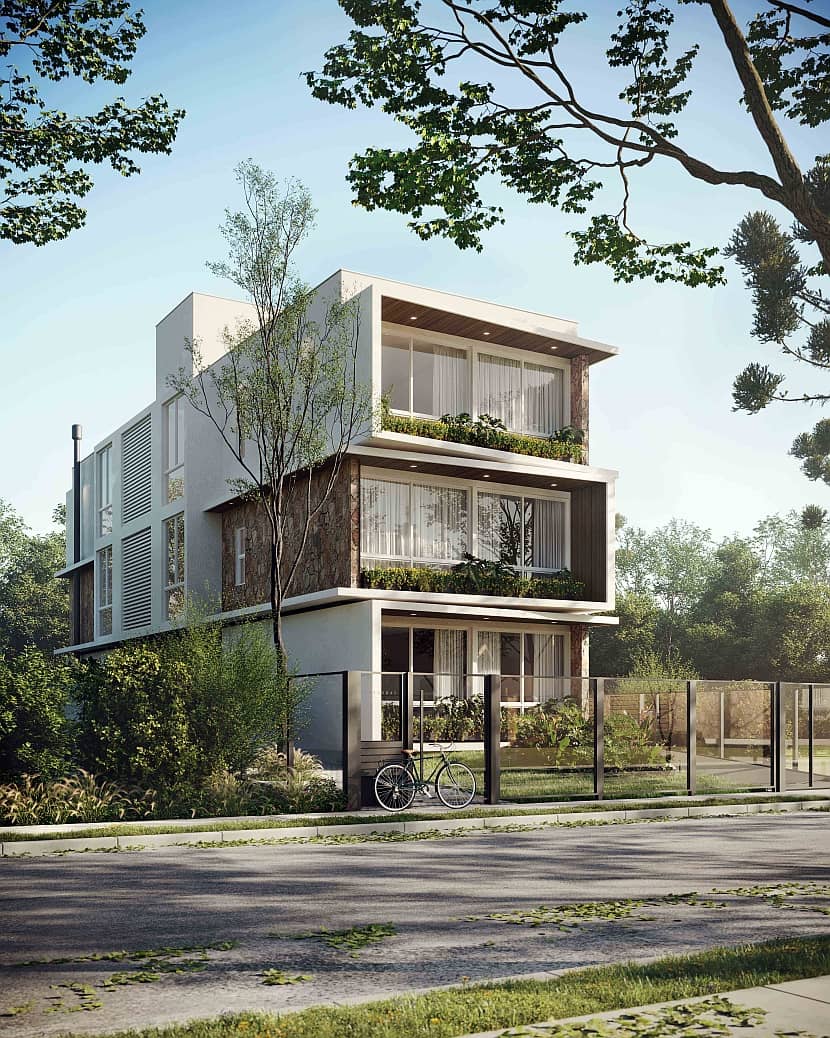
To begin with, a render farm is a network of high-performance computers used for rendering complex digital images or animations. They are often used in the film, animation, and architecture industries to render large projects that are impractical to render on a single computer. Why does 3D rendering take so long? This is a common question when dealing with render farms, as the time it takes can vary significantly based on several factors. If you want to learn more about the basic principles of a render service, stay with us as we explore the rendering times of 3D projects and how to improve them.
Factors That Impact Render Times
Knowing what a render farm does for you also leads to other important questions, one of them being how much time rendering a project will actually take. Well, the truth is, the time a render farm takes to finish a project varies depending on several factors, this is why we have created this article that contains all the information with examples, so you can have a better understanding of how the rendering times at a render farm work. You may want to check our article about render farms and how they work.
When using a render farm, there are multiple factors that influence the time it takes to complete the render. For example, how long does rendering take, will depend on the size of the project, the number of frames and the hardware used. These variables can simultaneously impact the overall rendering time and the resulting output:
- The complexity of the scene: This is about how intricate and detailed the scene is. The more complex the scene, the longer it takes to render. Some of the factors that contribute to its complexity include the number of objects in the scene, the textures, and the number of light sources.
- Size of the render: The larger the resolution, the longer it takes to render. Factors that contribute to size include the aspect ratio and the pixel dimensions.
- The number of frames: This refers to the number of frames that need to be rendered in an animation. The more frames, the longer it takes to render.
- Quality settings: The level of detail and complexity in the rendering, such as the number of samples, the amount of anti-aliasing, and the level of shadow detail impact render times. Higher quality settings significantly increase render times. Different hardware configurations, such as using CPUs or GPUs for rendering, also affect rendering times significantly.
- Hardware used by the render farm: The hardware used by the render farm affects render times. For example, newer and more powerful processors and graphics cards significantly reduce rendering times.
- Network connection: The time it takes for data to travel between the render farm and your local computer also affects render times. A slower network connection means more waiting time to get everything set up or to even receive the results. We, as an online render farm, understand the importance of time, which is why we created the Transfer Speed Optimizer, which automatically detects the best way to upload and download your files.
Always make sure your scene and its settings are according to your needs, keeping in mind that while a render farm delivers your results faster, the details that your scene requires will impact the render times.
Render Times and Tools
The average rendering time depends on the complexity of the project and the hardware used by the render farm, among other factors we already mentioned above.
For a simple scene with basic settings, on your local machine rendering may take only a few minutes to an hour. However, a complex scene with high-quality settings on the same computer may take several hours to a few days. A large render with many frames may even take up to a week. Note: Using GPUs for rendering can significantly reduce 3D rendering time, with some projects rendering in only a few hours.
But how do you know how much time the scene you want to render will take? A lot of commercial render farms have tools that help you calculate your rendering times. For example, RebusFarm offers a CostCalculator and Cost Estimation Tool, both tools have different approaches to give you a rough estimation, and in the end, you have an idea of how much time your job, in particular, will need in order to render.
CostCalculator
The CostCalculator works by asking the user to input various parameters related to their render job, such as the number of frames, the resolution, and the rendering time per frame. The calculator then uses this information to estimate the total cost of the job.
In addition to the basic parameters, the CostCalculator also allows users to select additional options such as priority rendering, which will bump the job to the front of the rendering queue, and the use of additional CPU cores, which speeds up the rendering process even further.
Cost Estimation
This tool provides a cost estimation based on 2-3 test frames, of your full animation, rendered on the render farm. Once the test renders are completed, you receive an estimated cost for rendering the entire frame range of your project. The test frames will also be seamlessly integrated into the final project, bypassing the need for re-rendering and any extra expenses.
Overall, both tools were designed to provide users with a clear and accurate estimate of the cost of their rendering job, based on the specific parameters of your project. This allows artists to make informed decisions about how to optimize their rendering process to achieve the best results while staying within their budget.
Examples of render times on a render farm
Let’s start with a general example of a project that takes 30 minutes of calculation per frame on your local computer, and you want to render a 1-minute animation video. The local computer system, running at full capacity, would need about 20 full days to calculate the frames. But – if this sequence is calculated by one hundred render nodes in a render farm instead of just one local system, 10 days of video rendering shrink to 2.5 hours. Now, let’s have a look at three specific projects, rendered at RebusFarm, comparing the local render times to the render times at the Rebus Render Service:
Cleopatra by Sergey Buravtsov
“... the final render was completed in roughly 30 minutes, on my PC this task would have easily taken 10 hours, at the very least”.

‘Cleopatra’ by Sergey Buravtsov, learn more about the feature in our RebusArt interview.
Edificio Varandas by Do Studio
“Using the Varandas project as an example, we easily saved six hours per scene, maybe more. These are highly detailed images, after all, including a lot of vegetation and such. Not to mention the animation, that alone would probably take us a couple of days to render ourselves”.

Learn more about the feature in our RebusArt interview.
Entity by Rossprod
“2 shots of the spaceship (around 1000 frames each) and 30 shots of the astronaut (from 100 frames to 1500 frames). For the first shot of the film, I calculated that on our machine it would have taken 25 days to render (without crashes of course) and it rendered in about 30 minutes on RebusFarm”.
In conclusion, rendering at a render farm significantly reduces rendering times, making it a popular choice in industries where large-scale rendering is necessary. However, render times vary depending on several factors, such as the complexity of the scene, the size of the render, and the hardware used by the render farm. It's essential to plan for rendering times in project timelines to ensure timely completion.

About the author
Nicole Holt is an experienced 3D enthusiast with a career in marketing and content writing. Thanks to this unique combination, she is able to showcase the technical intricacies of 3D art and rendering while also making the subject accessible to a wide audience. When she's not immersed in the digital world, Nicole can be found in the great outdoors, most likely with her beloved dog, Sammy.
Get started with your own renderings
